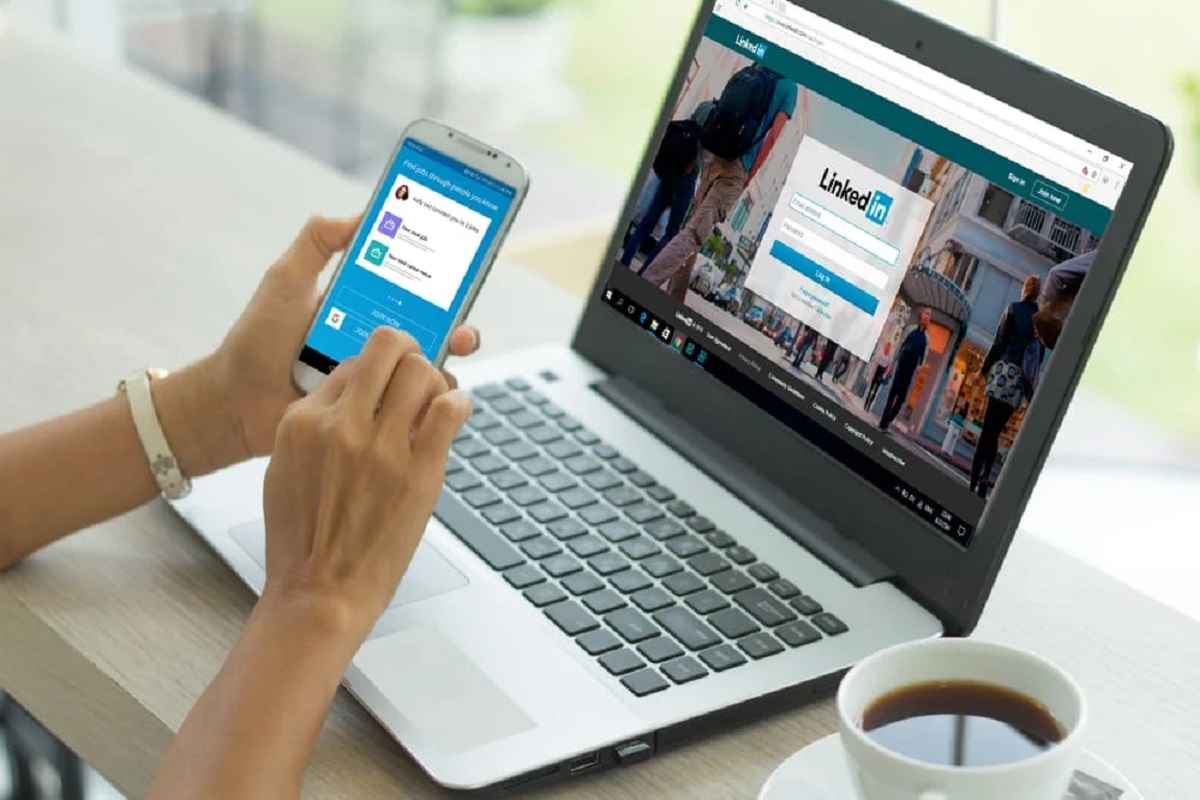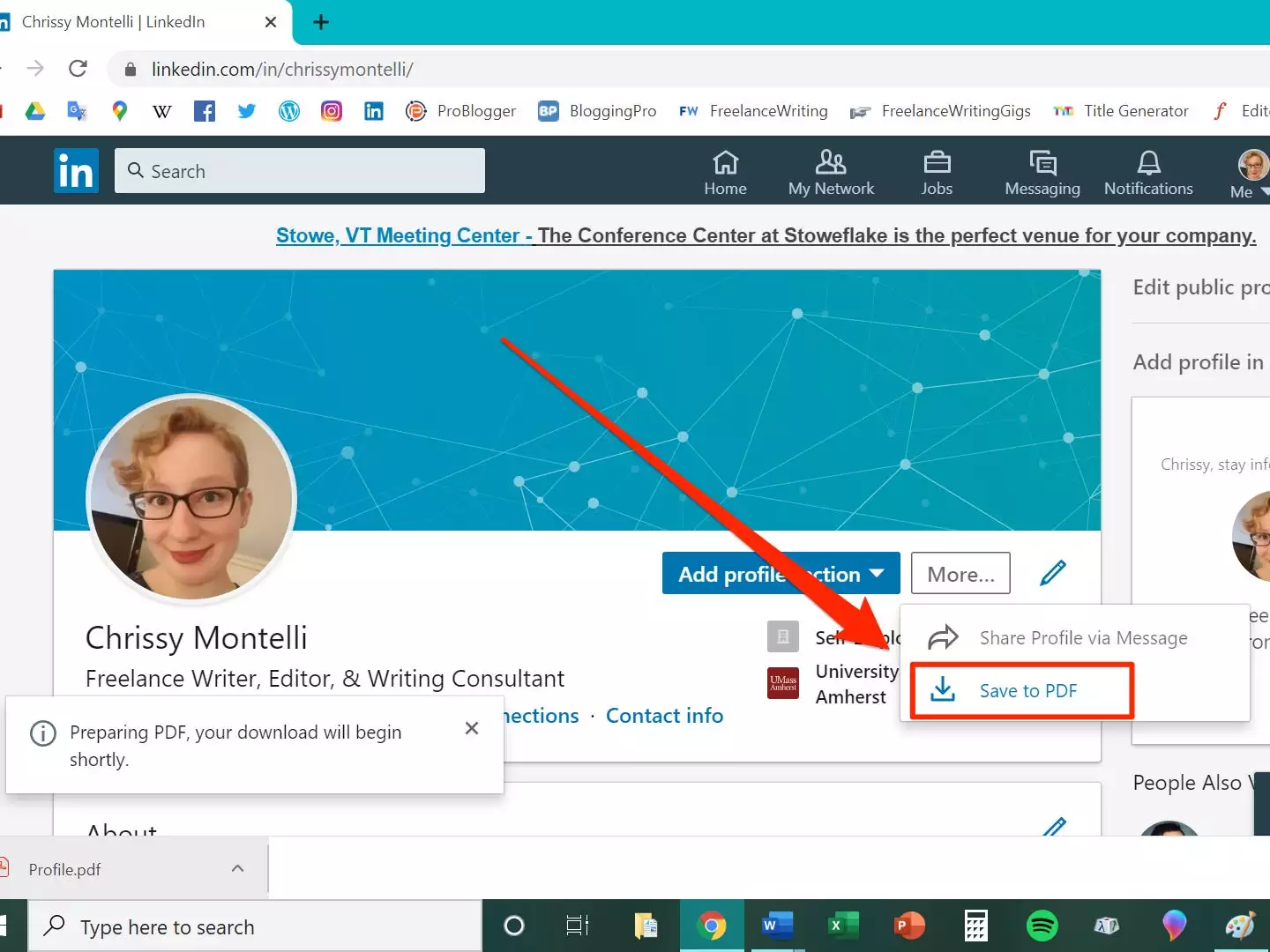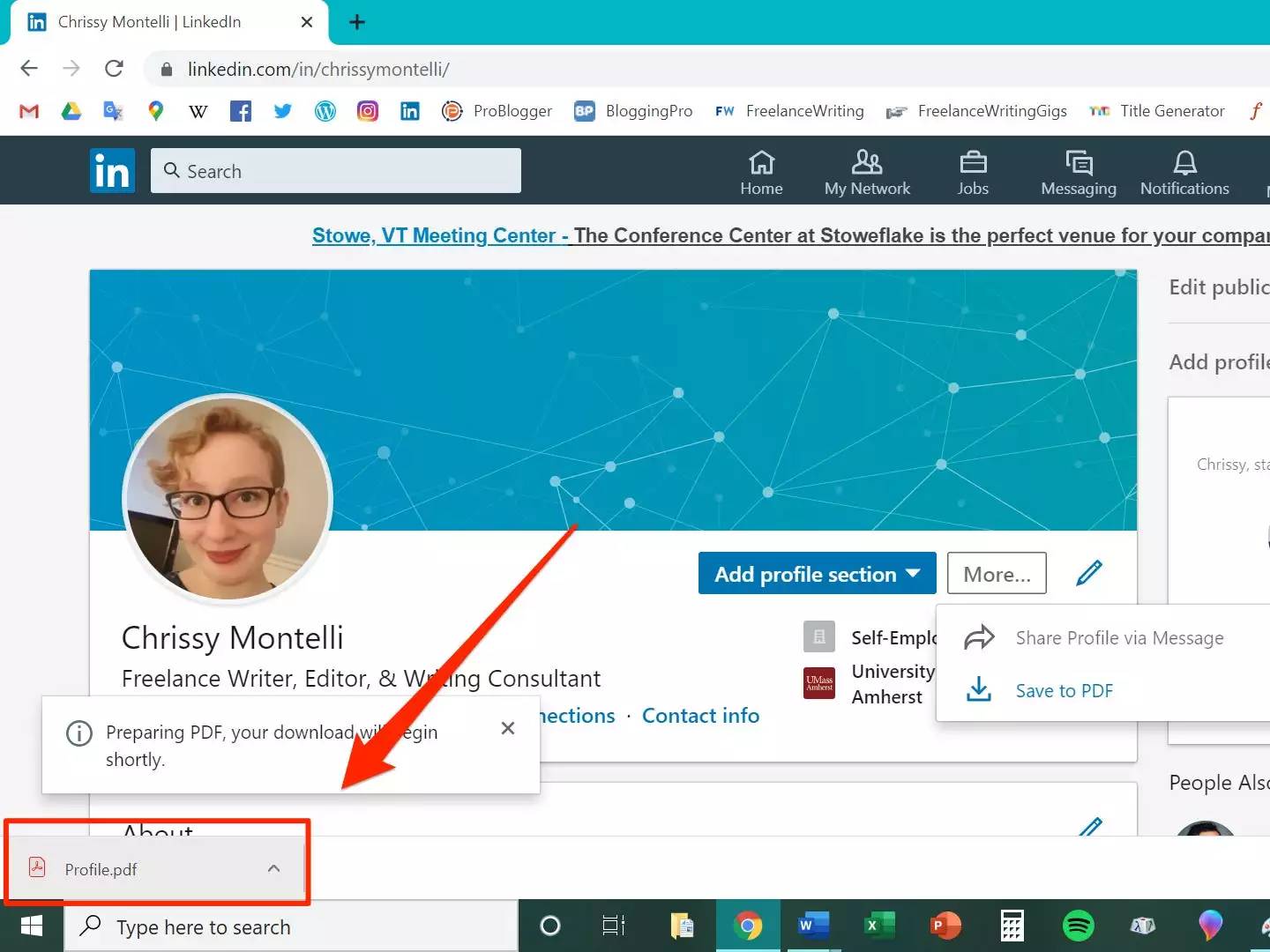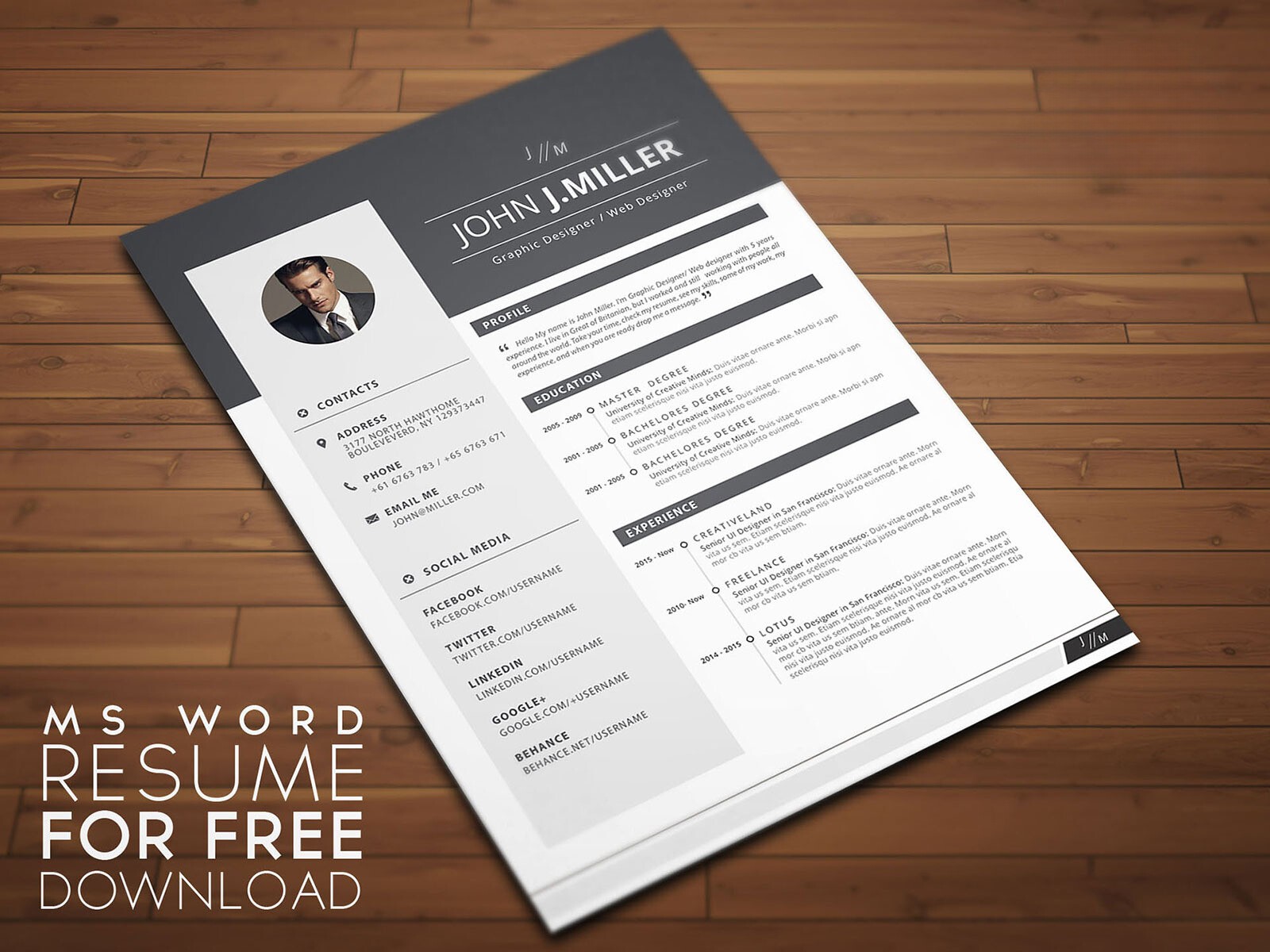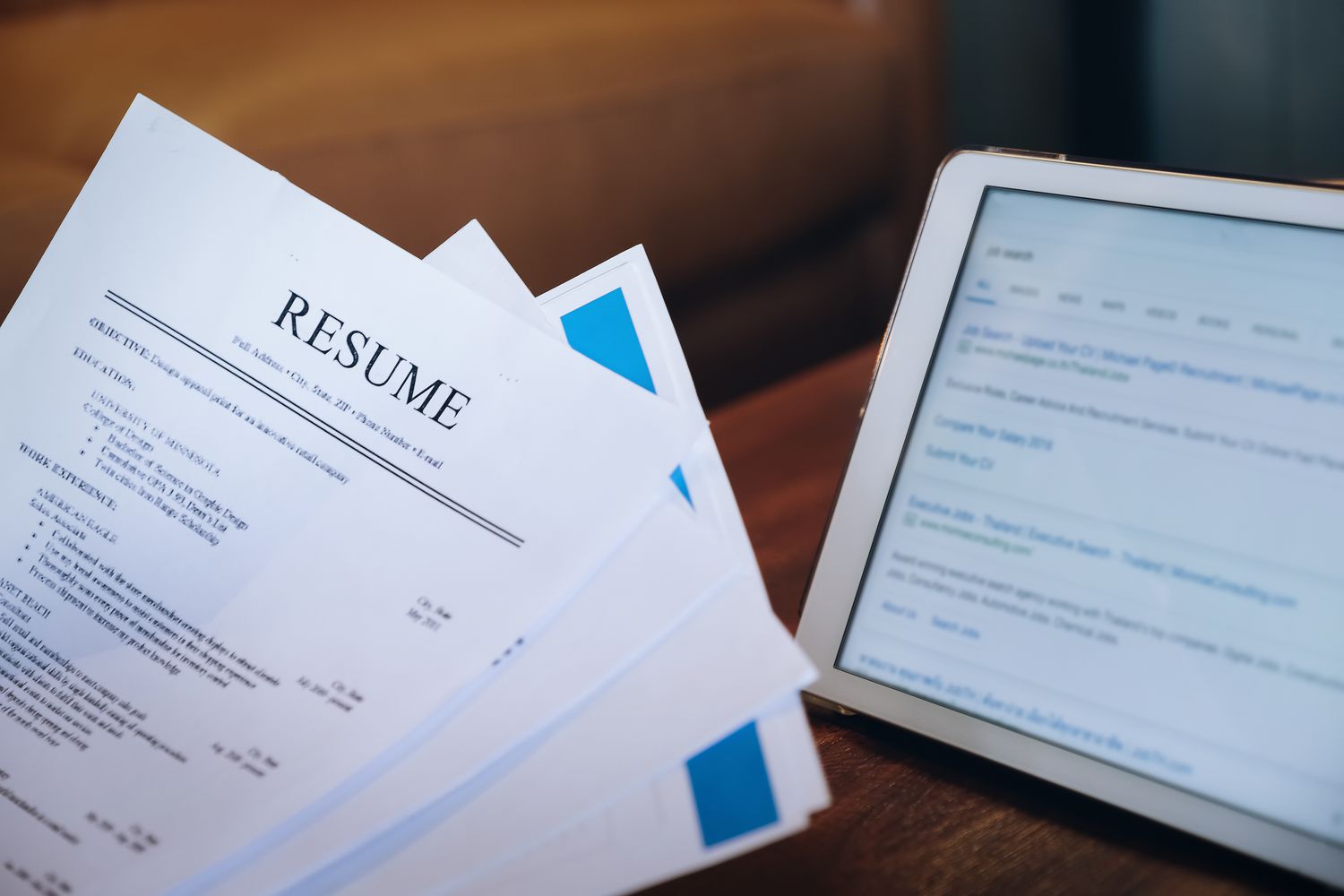Introduction
Are you looking to download your resume from LinkedIn? LinkedIn provides a convenient option to export your profile information into a professional resume format. This makes it easier for you to share your qualifications and experiences with potential employers and recruiters.
Having a well-crafted resume is crucial in today’s competitive job market. It’s not only a summary of your skills and work history, but also a chance to showcase your expertise and catch the attention of hiring managers. By downloading your LinkedIn resume, you can have a polished document that highlights your professional achievements and positions you as a strong candidate.
In this article, we will guide you through the step-by-step process of how to download your resume from LinkedIn. Whether you want to update your resume or create a new one, this simple process will help you access your profile information quickly and efficiently.
Before we dive into the steps, make sure you have an active LinkedIn account. If you don’t have one, you can sign up for free on the LinkedIn website. Once you have your account set up, you’ll be ready to start downloading your resume.
Step 1: Log in to your LinkedIn account
The first step in downloading your resume from LinkedIn is to log in to your account. Open your preferred web browser and visit the LinkedIn website. Enter your login credentials – your email address or phone number associated with your LinkedIn account, along with your password.
If you have forgotten your password, you can click on the “Forgot password?” link and follow the instructions to reset it. Make sure to use a strong and secure password to protect your account.
After entering your login information, click on the “Sign in” button to access your LinkedIn account. Once you are logged in, you will be directed to your LinkedIn homepage, where you can manage your profile and navigate through various features.
It’s important to note that LinkedIn may occasionally request additional security verification steps, such as entering a code sent to your email or phone number. This is to ensure the safety of your account and protect your personal information.
Step 2: Go to your profile page
Once you have successfully logged in to your LinkedIn account, you need to navigate to your profile page. Your profile page is where you can view and manage your personal and professional information.
To go to your profile page, locate the “Me” icon in the top navigation bar. This icon is represented by a silhouette of a person’s head and shoulders. Clicking on the “Me” icon will open a drop-down menu with various options.
From the drop-down menu, select “View profile.” This will take you to your LinkedIn profile, where you can see a summary of your background, work experience, education, and other details that you have included.
On your profile page, you can also see a dashboard with different sections, such as “About,” “Experience,” “Education,” and more. These sections allow you to showcase your skills, accomplishments, and career history.
Take a moment to review and update your profile information, ensuring that it accurately reflects your current professional status. This will help in creating a comprehensive and up-to-date resume when you download it from LinkedIn.
If you haven’t yet filled out your profile or need to make any changes, click on the “Edit Profile” button located near the top-right corner of your profile page. This will allow you to add or modify the content in each section of your profile.
Step 3: Navigate to the “More” button
After accessing your profile page on LinkedIn, you will need to locate the “More” button to proceed with downloading your resume. The “More” button provides access to additional options and functionalities within LinkedIn.
To find the “More” button, look for the three-dot icon (•••) located towards the right-hand side of your profile page, just below your profile picture and name. Clicking on this icon will open a drop-down menu with various actions you can take.
In the drop-down menu, you will find options such as “Save to PDF,” “Save to Drive,” “Print Profile,” and more. These options allow you to customize and save your profile information in different formats.
Click on the “More” button to expand the menu and reveal the available options. Take a moment to explore the different actions and their functionalities to familiarize yourself with the customization options LinkedIn offers.
By clicking on the “More” button, you are one step closer to downloading your resume. After selecting the appropriate option, LinkedIn will generate your resume in the desired format, making it ready for downloading and sharing with potential employers or recruiters.
Keep in mind that the specific actions and available options in the “More” menu may vary slightly based on updates and changes to the LinkedIn platform. However, the general location of the “More” button and its functionality remain consistent.
Step 4: Select “Get Started” under the “Show recruiters you’re open to work” section
LinkedIn offers a feature called “Show recruiters you’re open to work” that allows you to indicate your job preferences and let recruiters know that you are actively seeking new opportunities. By enabling this feature, you can increase your chances of being contacted by potential employers.
To access this feature, start by clicking the “View profile” button on your LinkedIn homepage. This will take you to your profile page, where you can manage your professional information.
Scroll down on your profile page until you find the “Show recruiters you’re open to work” section. It is typically located below the “Featured” and “About” sections, but the exact positioning may vary.
Within the “Show recruiters you’re open to work” section, you will see a button labeled “Get Started.” Click on this button to activate the feature and set your job preferences.
A dialog box will appear, asking you to provide more details about the type of job you are interested in and the specific criteria you are looking for. LinkedIn offers options to customize your job preferences by selecting job titles, locations, industries, and more.
Take your time to fill in the necessary information accurately and thoughtfully. The more specific you are with your job preferences, the better LinkedIn can match you with relevant opportunities.
Once you have completed filling out your job preferences, click on the “Done” button to save your changes. LinkedIn will update your profile to indicate that you are open to new job opportunities and help connect you with recruiters and hiring managers in your desired field.
Enabling the “Show recruiters you’re open to work” feature is optional, but it can significantly enhance your visibility to potential employers on LinkedIn and increase your chances of finding your dream job. Remember to regularly update your job preferences as your career goals evolve.
Step 5: Customize your job preferences (optional)
LinkedIn offers the option to customize your job preferences, allowing you to narrow down your search for relevant job opportunities. This step is optional but highly beneficial if you want to receive more targeted job recommendations and increase your chances of finding the right job.
Once you have clicked on the “Get Started” button in the “Show recruiters you’re open to work” section, LinkedIn will prompt you to customize your job preferences. This will help LinkedIn’s algorithm match you with job openings that align with your career goals.
To customize your job preferences, you will be presented with various fields such as job titles, locations, industries, and more. Take the time to carefully select the options that best reflect the type of position you are looking for.
Start by entering specific job titles that you are interested in. This can include roles, skills, or industries that you want to explore. For example, if you are looking for a marketing role, you can enter “Marketing Specialist” or “Digital Marketing Manager.”
Next, indicate your preferred locations. You can specify a city, region, or even a specific country where you would like to work. This is particularly useful if you have a particular location in mind for your job search.
Additionally, LinkedIn allows you to specify the desired company size, the level of seniority you are targeting, and the type of employment (full-time, part-time, contract, etc.) you are seeking.
Take your time to review and adjust the options according to your preferences. The more detailed and accurate your job preferences are, the more relevant job suggestions you will receive from LinkedIn.
Once you are satisfied with your selections, click on the “Done” button to save your job preferences. LinkedIn will update your profile and use this information to recommend job openings and notify recruiters of your interest in specific roles.
Keep in mind that it is important to regularly review and update your job preferences as your career goals evolve or if you are open to exploring new opportunities. This will ensure that you continue to receive personalized job recommendations that align with your aspirations.
Step 6: Download your resume
Now that you have customized your job preferences, you can proceed to download your resume from LinkedIn. This will allow you to have a professional document that highlights your skills and experiences, ready to be shared with potential employers.
To download your resume, go to your LinkedIn profile page and click on the “More” button, indicated by the three-dot icon (•••) located near your profile picture and name. A drop-down menu will appear with various options.
In the drop-down menu, select the option that says “Save to PDF” or a similar option that indicates saving your profile as a downloadable document. LinkedIn will then generate your resume in a PDF format.
After selecting the “Save to PDF” option, you may be prompted to confirm the action or customize the settings for your resume download. Follow the on-screen instructions and make any necessary adjustments based on your preferences.
Once you have confirmed the settings, LinkedIn will process your resume and prepare it for download. This may take a few seconds, depending on the size of your profile and the amount of information you have included.
After the processing is complete, a download prompt will appear on your screen. You can choose to save the file directly to your device or select a specific location for the saved file.
Make sure to choose a location on your computer or mobile device where you can easily locate the downloaded resume in the future. It is recommended to use a file name that reflects your name and the purpose of the document, such as “JohnDoe_Resume.pdf.”
Once you have selected the location and file name, click on the “Save” button to initiate the download. LinkedIn will transfer the resume file to your device, and you can access it whenever you need to share it with potential employers or attach it to job applications.
It is advisable to open the downloaded resume file to ensure that it appears as intended and that all the necessary information is included. Double-check for any formatting or content errors before sending it out to employers.
By following these steps, you will be able to download your resume from LinkedIn quickly and efficiently, enabling you to present your professional qualifications in a polished and accessible format to potential employers.
Step 7: Choose the format of your resume
When downloading your resume from LinkedIn, you have the option to choose the format in which it will be saved. The format you select will impact the compatibility and visual appearance of your resume when viewed by others.
Typically, LinkedIn offers formats such as PDF (Portable Document Format) and Microsoft Word (DOC or DOCX). Both formats have their advantages, and the choice depends on your personal preferences and the requirements of the recipient.
The PDF format is widely used and ensures that your resume retains its formatting and layout regardless of the device or software used to open it. This format is recommended if you want to preserve the design integrity of your resume and ensure that it appears as intended.
The Microsoft Word format, on the other hand, provides more flexibility for editing and customizing your resume. It allows the recipient to make changes to the content, such as updating contact information or adding specific details relevant to the job application.
Consider the purpose of your resume and the preferences of potential employers when choosing the format. Some companies may specify the preferred file format in their application guidelines or job postings.
To select the format of your resume while downloading it from LinkedIn, follow the prompts or settings provided during the download process. LinkedIn will typically give you the option to choose between PDF and Microsoft Word formats, as well as any other available formats.
Take a moment to review the available options and select the format that aligns with your needs. If you are uncertain about which format to choose, it is generally a safe choice to save your resume as a PDF as it ensures consistency and professionalism.
Remember to consider the compatibility of the selected format with different devices and software versions. It’s important to ensure that the recipient of your resume can easily open and view the document without the need for additional software or formatting adjustments.
By choosing the appropriate format for your resume, you will enhance its accessibility and ensure that it is well-received by potential employers or recruiters.
Step 8: Save your resume to your device
Once you have selected the format of your resume, the final step is to save it to your device. Saving your resume will ensure that you have a copy readily available for future use and easy access when needed.
After selecting the desired format during the download process, LinkedIn will prompt you to save the file to your device. Depending on your device and web browser settings, the exact steps may vary slightly.
Typically, you will be prompted to choose a location on your computer or mobile device where you would like to save the resume file. Select a location that you can easily remember and find later, such as your “Documents” or “Downloads” folder.
When choosing the name for your resume file, keep it simple and professional. Including your name and the word “resume” or “CV” in the file name will make it easily identifiable. For example, you can use a file name like “JohnDoe_Resume.pdf” or “JaneSmith_CV.docx.”
Once you have selected the location and file name, click on the “Save” button to complete the process. The resume file will be automatically saved to the chosen location on your device.
After saving your resume, take a moment to open and review the file to ensure that it downloaded correctly and appears as intended. Check for any formatting issues, missing information, or potential errors that may need to be corrected.
It is also advisable to create a backup of your resume by making a copy and saving it in a separate location, such as an external hard drive, cloud storage service, or a USB drive. This will ensure that you have a backup in case of accidental deletion or device failure.
Lastly, remember to keep your resume updated and revise it regularly as you gain new skills and experiences. This will ensure that you always have an accurate and up-to-date version available for potential employers or job applications.
By saving your resume to your device, you are ready to share it electronically or print it as needed, making it a versatile tool to support your job search efforts.
Conclusion
Downloading your resume from LinkedIn is a straightforward process that enables you to create a professional document showcasing your skills and experiences. By following the steps outlined in this guide, you can easily access and save your resume for future use and job applications.
Remember to log in to your LinkedIn account to begin the process. Navigate to your profile page and locate the “More” button to access the resume download options. Customize your job preferences if desired, and choose the format that best suits your needs.
Once you have selected the format, save your resume to your device, ensuring it is easily accessible when reaching out to potential employers or applying for jobs. Take the time to review and update your resume periodically to keep it current and relevant.
Downloading your resume from LinkedIn is an effective way to present your professional qualifications in a well-structured and easily shareable format. It can help you stand out in the competitive job market and increase your chances of securing interviews and job offers.
Remember to utilize your resume wisely by tailoring it to specific job applications and highlighting your most relevant skills and experiences. A strong and well-crafted resume will make a positive impression on hiring managers and recruiters.
Now that you have the knowledge and guidance to download your resume from LinkedIn, take action and enhance your job search efforts. With a professional resume at your fingertips, you are one step closer to achieving your career goals.







